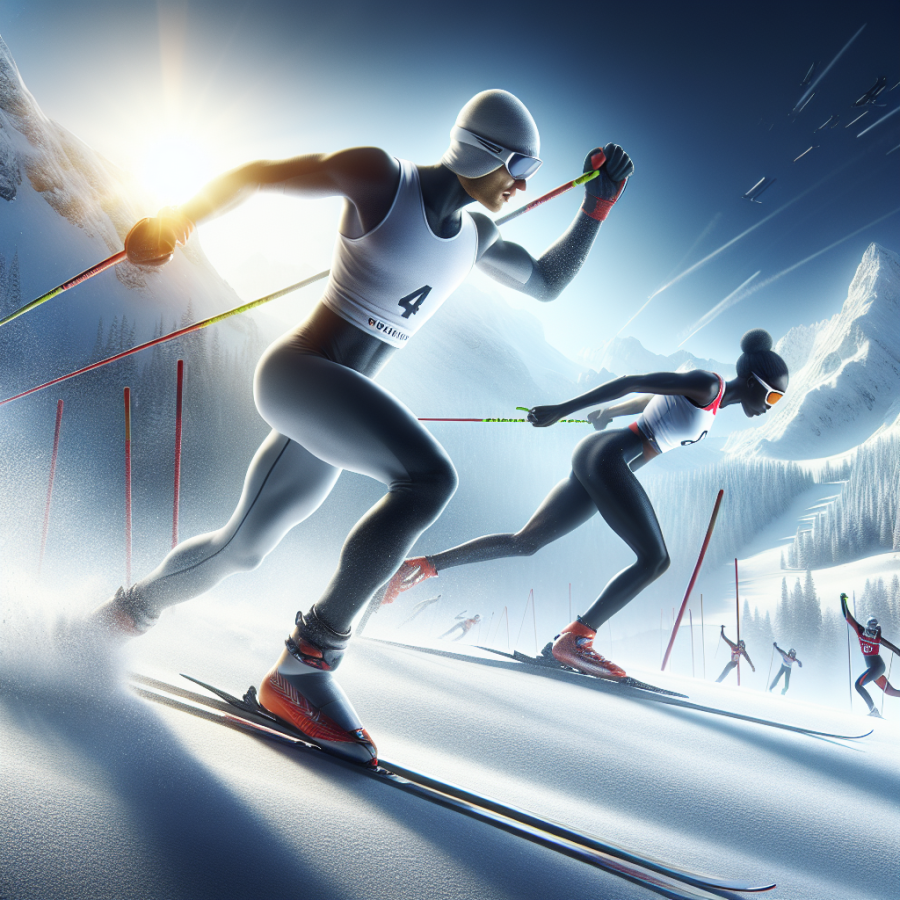Strategies for Success in the Dual Disciplines of Nordic Combined Events
Sure, to expand the professional blog section with a focus on "Strategies for Success in the Dual Disciplines of Nordic Combined Events", here are some key points that might be covered under that topic, aligned with the theme of mastering both the ski jumping and cross-country skiing components of Nordic combined:
**Balancing Training Regimes:** Success in Nordic combined requires athletes to balance their training between the explosive power needed for ski jumping and the endurance required for cross-country skiing. Athletes need to work closely with their coaches to develop a training schedule that adequately prepares them for both disciplines without leading to overtraining or injury.
**Technique Refinement in Ski Jumping:** Perfecting the technique is pivotal in ski jumping, where every small adjustment can result in significant distance gains. Athletes should focus on improving their inrun position, take-off, flight posture, and landing technique to maximize efficiency and distance.
**Cross-Country Skiing Efficiency:** In cross-country skiing, efficiency is key. Nordic combined athletes must focus on optimizing their skiing technique to conserve energy over the duration of the race. This can include working on stride length, pole usage, and maintaining a steady pace that aligns with their physiological capabilities.
**Equipment Optimization:** Equipment in both ski jumping and cross-country skiing must be carefully selected and optimized. This includes not only the right ski length and profile but also the best-suited binding placement and boot fit. Regular equipment checks are crucial to ensure maximum performance.
**Mental Preparation:** The psychological aspect of competing in two disciplines can be demanding. Athletes have to maintain focus and composure between their jumps and then switch gears to endure the grueling cross-country ski race. Mental preparation strategies such as visualization, relaxation techniques, and goal setting are often used.
**Nutrition and Recovery:** Balancing the nutritional needs of explosive and endurance sports is unique to Nordic combined athletes. They need to ensure optimal intake of macronutrients for quick energy during jumping and sustained energy during skiing, as well as proper hydration strategies. Recovery practices, including rest, physiotherapy, and massage, are important to prepare for competitions and manage the season's workload.
**Weather Adaptations:** Conditions for ski jumping and cross-country skiing can vary dramatically, and athletes must be adept at adapting their strategies to wind, temperature, and snow conditions. This adaptability often comes from experience and can be a decisive factor in performance.
Read also:
The Thrilling World of Buhurt: Full-Contact Medieval Combat
Conquering the Nordic Combined: A Blend of Ski Jumping and Cross-Country Skiing
The Nordic Combined is a unique winter sport that intricately blends the high-flying action of ski jumping with the endurance-testing grind of cross-country skiing. This event tests athletes in ways that few other sports can, demanding both aerial grace and cross-country grit. Mastering this sport is not merely about excelling in one discipline but combining the skills and strategies of both to achieve success.
In the realm of ski jumping, athletes must focus on technique and precision. Every movement, from the inrun to the takeoff and flight, plays a critical role in determining the distance of the jump. Coordination and balance are key, as even the slightest miscalculation can mean the difference between a record-breaking leap and a fall from grace. However, it isn't just about jumping far. Judges also score the style and form of the jump, which means that participants must maintain poise and control throughout their aerial journey.
Transitioning from the explosive power required for ski jumping to the steady endurance necessary for cross-country skiing is no easy task. The latter portion of the Nordic Combined pushes athletes to their physical limits. A cross-country skier needs to possess strong aerobic and anaerobic capacities, superb technique, and the mental toughness to endure the grueling race. It's a test of pacing and energy management, as competitors must know when to push their limits and when to conserve energy for the final sprint to the finish line.
Training for the Nordic Combined demands a multifaceted approach. Athletes spend countless hours perfecting their ski jumping form, working on the minutiae of their technique to maximize their flight. Simultaneously, they must dedicate themselves to building cardiovascular endurance, strength, and speed necessary for cross-country skiing. This means engaging in a mix of interval training, long-distance workouts, and strength training routines that give them the power and stamina needed for peak performance.
Strategy also plays a crucial role in the Nordic Combined. The competition formatting typically follows a Gundersen method, where the results of the ski jump determine the starting positions for the cross-country race. Athletes who excel in ski jumping earn a head start, while those more adept at cross-country skiing face the challenge of making up ground. This creates a dynamic and unpredictable race, where a strong performance in one section can offset a weakness in the other.
Furthermore, equipment and waxing techniques can significantly impact an athlete's performance in both disciplines.





